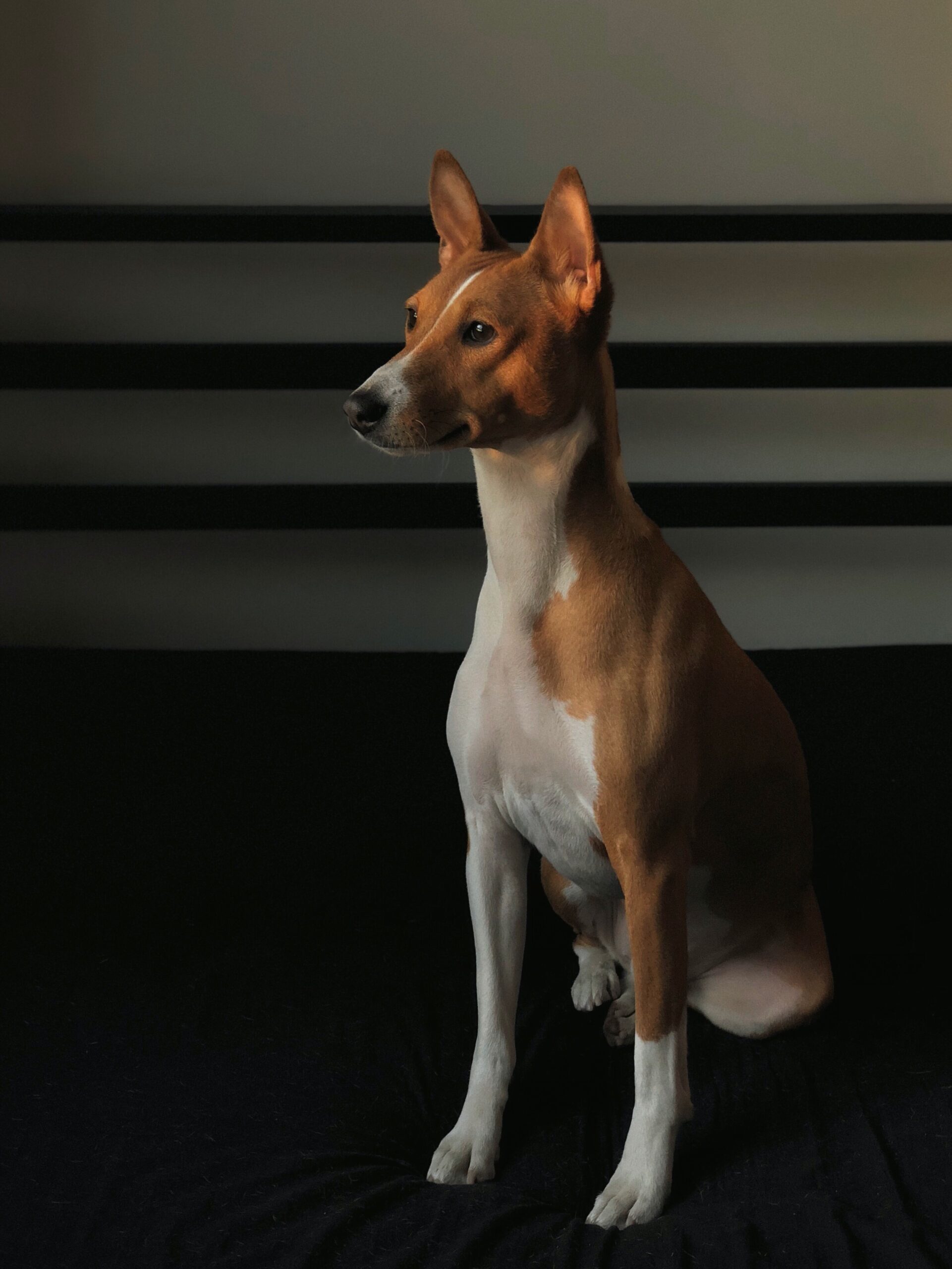
The Basenji is a unique and ancient dog breed known for its intelligence, independence, and distinctive vocalization, often referred to as the “barkless dog.” Here is some general information about the Basenji:
Basenji Origin
The Basenji is believed to have originated in Central Africa, specifically in regions such as the Congo and Sudan. It is considered one of the oldest known dog breeds, with evidence of its existence dating back thousands of years.
Basenji Appearance
Basenjis have a small to medium-sized, athletic build. They have a distinctive wrinkle-free forehead, almond-shaped eyes that convey intelligence and curiosity, and erect ears that stand forward. Their short, smooth coat comes in various colors, including red, black, tricolor, and brindle. They have a curled tail and a graceful, agile posture.
Basenji Size
Basenjis are typically small to medium-sized dogs. Adult males usually stand between 16 and 17 inches (41-43 cm) tall at the shoulder, while females are slightly smaller, ranging from 15 to 16 inches (38-41 cm). They typically weigh between 22 to 26 pounds (10-12 kg).
Basenji Temperament
Basenjis are known for their independent, intelligent, and curious nature. They are often described as cat-like due to their independent and aloof demeanor. They are generally affectionate with their families but may be reserved or aloof with strangers. Basenjis are also known for their unique vocalization, which is more of a melodic yodel or howl rather than a typical bark.
Basenji Energy Level
Basenjis are energetic dogs that require regular exercise and mental stimulation. They have a natural inclination for play and enjoy activities such as running, chasing, and playing games. Providing them with outlets for their energy is essential for their well-being.
Basenji Compatibility
Basenjis can make loving and devoted family companions, but their independent nature requires patient and consistent training. They tend to bond closely with their families and can be good with children if raised together. Due to their high prey drive, caution should be exercised when introducing them to small animals.
Basenji Grooming
Basenjis have a short, low-maintenance coat. They are known for their cleanliness and self-grooming habits. Regular brushing helps keep their coat in good condition. They have minimal doggy odor and are considered a relatively clean breed.
Basenji Health
Basenjis are generally a healthy breed. However, they may be prone to certain health conditions, including progressive retinal atrophy (PRA), hip dysplasia, and Fanconi syndrome, a kidney disorder. Regular veterinary check-ups, a balanced diet, and exercise can help maintain their overall health.
Basenji Trainability
Basenjis are intelligent and quick learners, but they can also be independent and stubborn. Positive reinforcement techniques and early socialization are essential for their training. Basenjis excel in activities such as agility, obedience, and scent work.
Basenji Longevity
On average, Basenjis have a lifespan of around 12 to 14 years. With proper care, a balanced diet, regular exercise, and regular veterinary attention, some individuals may live even longer.
Breeds Sharing Similarities with the Basenji
While the Basenji is truly one-of-a-kind with its unique “yodel” and cat-like grooming habits, a few other breeds share some of its characteristics, including:
- Pharaoh Hound: This ancient breed shares a similar sleek build, short coat, and almond-shaped eyes with the Basenji. They are also known for their intelligence and independence. However, unlike the Basenji, they are vocal and have a strong prey drive.
- Shiba Inu: With their curled tail, pricked ears, and alert expression, Shiba Inus have a resemblance to the Basenji. Both breeds are known for their independent nature and aloofness towards strangers. However, Shiba Inus have a thicker coat and a more fox-like appearance.
- Cirneco dell’Etna: Hailing from Sicily, this ancient breed shares the Basenji’s athletic build, short coat, and love of running. Both breeds are energetic and independent, but the Cirneco dell’Etna is generally more outgoing and affectionate.
- Podenco Canario: Another ancient breed from the Canary Islands, this sighthound boasts a similar lean body, short coat, and alert demeanor as the Basenji. They are both independent and athletic, but the Podenco Canario is generally more social and vocal.
- Ibizan Hound: This Spanish breed shares the Basenji’s elegant appearance, long legs, and athleticism. They are both intelligent and independent, but the Ibizan Hound is known for its exceptional jumping ability and a more playful personality.
While these breeds may share some physical or temperamental traits with the Basenji, it’s important to note that each breed has its own unique personality and specific needs. If you’re considering adding a new furry friend to your family, be sure to research each breed thoroughly to ensure a good fit for your lifestyle and preferences.
The Basenji’s unique characteristics, ancient lineage, and vocalization make it a fascinating breed. Potential owners should be prepared to provide them with mental stimulation, exercise, and patient training to ensure a happy and well-adjusted Basenji companion.




















